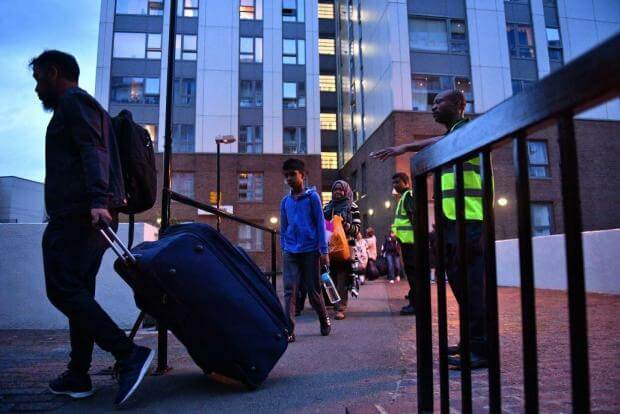The recent scenes of thousands of people being evacuated from apartment blocks in London shocked Australian apartment residents – almost as much as the deadly Grenfell Tower fire that prompted Camden council to take such drastic action.
Given that we seem to have even more buildings with inflammable cladding than the Brits, can we expect to see similar scenes here?
To be clear, the Camden evacuations, in which 3000 residents were moved to emergency accommodation, wasn’t a bureaucratic over-reaction to the presence of unsafe cladding on their tower blocks.
According to UK newspapers, the local fire brigade told the council they needed to get people out as quickly as possible because those buildings also had inflammable cladding on top of other serious fire safety issues, including faulty fire doors and exposed gas pipes.
Which brings us to the Australian equivalent to London’s council flats – Housing NSW’s stock of apartment high-rises?
Surely if an estimated 2000-plus privately owned unit blocks across this state have cheap cladding, then “houso” high-rises must be similarly endangered. And has anybody even checked?
Well, yes, we have, says Family and Community Services Minister Pru Goward. And no, they don’t have buildings with aluminium cladding on them.
“Family and Community Services (FACS) takes the safety of its tenants very seriously,” she told Flat Chat. “I am advised that none of our residential tower blocks have aluminium composite cladding on their facades.
“All residential towers are solidly built and well equipped to reduce fire risk. Most are concrete structures, with concrete floors and brick infill,” she added. “The tower blocks are fitted with a range of additional active and passive fire safety measures to reduce fire risk.”
Lucky us, you have to think. In the UK, of the 80 or so apartment buildings covered with aluminium cladding that councils have so far checked, every one of them failed the fire safety test.
And Grenfell, in which more than 70 council tenants died, was a perfect storm of unsafe materials, over-crowding, densely laid-out apartments, inadequate fire safety measures and fatally poor information that made the tragedy much worse than it otherwise might have been.
Housing NSW high-rise tenants add up to a tiny fraction of the numbers of council tenants in the UK and represent a relatively small proportion of apartment residents here.
And that reveals another reason we not seen scores of Australian families tipped out into the streets with only whatever goods and chattels they can carry.
Is it because the majority of our buildings are safer than the Brits’? Or is it because nobody is running around asking questions that could lead to a very expensive answer?
If a building was deemed to be so unsafe it was uninhabitable, rental investors, who own the majority of units in this state, would have to pay to re-house their tenants as well as their share of the cost of replacing the cladding.
Meanwhile, by the way, the developers and builders who put the cheap crap all over our buildings are highly unlikely to be held to account, either legally or financially.
If the investors have little interest in identifying problems and the residents don’t want to end up sleeping in the local sports centre – nearly 100 people refused to leave the Camden flats – who’s going to ring the alarm bells?
As we said recently, it is almost inevitable that we will see another high-rise fire in Australia, not least because we seem to have even more buildings covered in this stuff than the Brits do.
We have all the ingredients – inflammable cladding on buildings with dodgy or inadequate fire safety equipment, laughable certification procedures, over-crowding, internally sub-divided units, blocked and locked fire escapes, open fire doors, junk-filled balconies and poor management that allows all this to go on.
I’d wager that at least one building, somewhere in this city has most if not all of those issues. If so, we are one dropped cigarette end, one neglected balcony barbecue, one faulty heater away from our own Grenfell.
But, in the meantime, rest easy (albeit with crossed fingers): there will be no mass evacuation of flat dwellers in NSW because all the risk is on private property and not in Housing NSW blocks.




